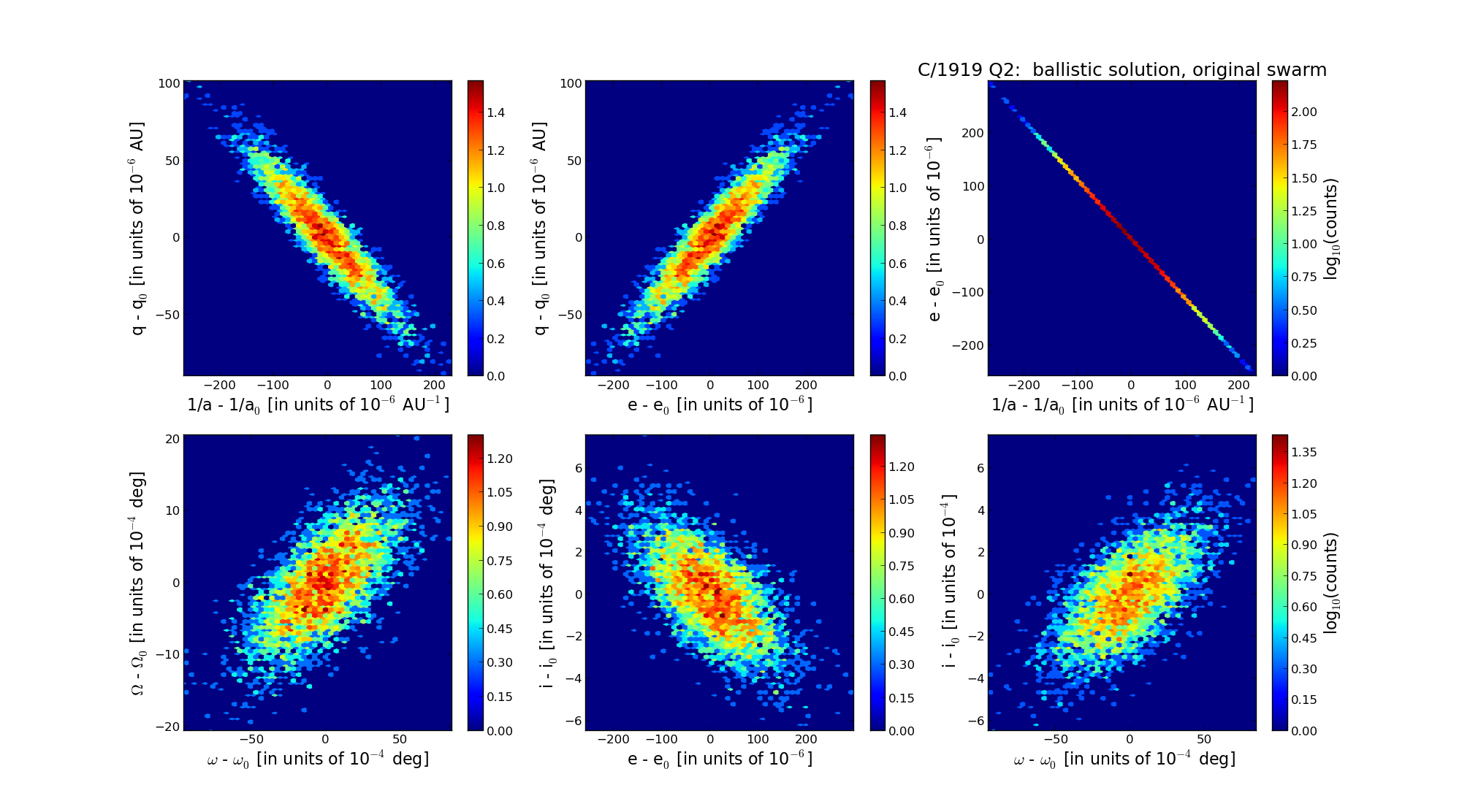| Solar System Dynamics & Planetology Group |
 |
C/1919 Q2 Metcalf |  |
| Solar System Dynamics & Planetology Group |
 |
C/1919 Q2 Metcalf |  |
| number of observations | 275 |
| number of residuals | 498 |
| data interval | 1919 Aug. 25 — 1920 Feb. 3 |
| rms [arcsec] | 2.58 |
| orbit quality class | 2a |
| Epoch (TT) | 19191118.0 | = JD 2422280.5 |
| time of perihelion passage (TT) | 19191207.809648 | ± 0.002096 |
| perihelion distance | 1.11527223 | ± 0.00002732 |
| eccentricity | 1.00020566 | ± 0.00007480 |
| argument of perihelion [deg] | 185.753567 | ± 0.002470 |
| longitude of the ascending node [deg] | 122.098062 | ± 0.000560 |
| inclination [deg] | 46.381870 | ± 0.000174 |
| inverse semimajor axis [10-6 au-1] | -184.40 | ± 67.07 |

| Epoch (TT) | 16210324 | |
| time of perihelion passage (TT) | 19191207.325501 | ± 0.002308 |
| perihelion distance | 1.11815172 | ± 0.00002760 |
| eccentricity | 0.99996124 | ± 0.00007520 |
| argument of perihelion [deg] | 185.698259 | ± 0.002474 |
| longitude of the ascending node [deg] | 122.175370 | ± 0.000564 |
| inclination [deg] | 46.404177 | ± 0.000178 |
| inverse semimajor axis [10-6 au-1] | 34.67 | ± 67.26 |

| Epoch (TT) | 22171225 | |
| time of perihelion passage (TT) | 19191208.123284 | ± 0.002011 |
| perihelion distance | 1.11801549 | ± 0.00002841 |
| eccentricity | 1.00003007 | ± 0.00007525 |
| argument of perihelion [deg] | 185.783020 | ± 0.002443 |
| longitude of the ascending node [deg] | 122.055357 | ± 0.000557 |
| inclination [deg] | 46.365671 | ± 0.000179 |
| inverse semimajor axis [10-6 au-1] | -26.89 | ± 67.31 |